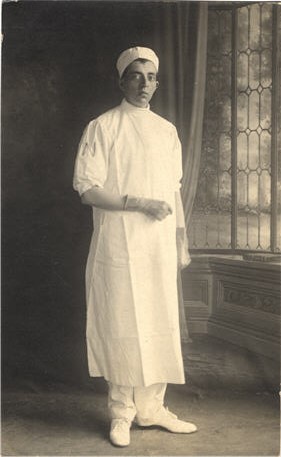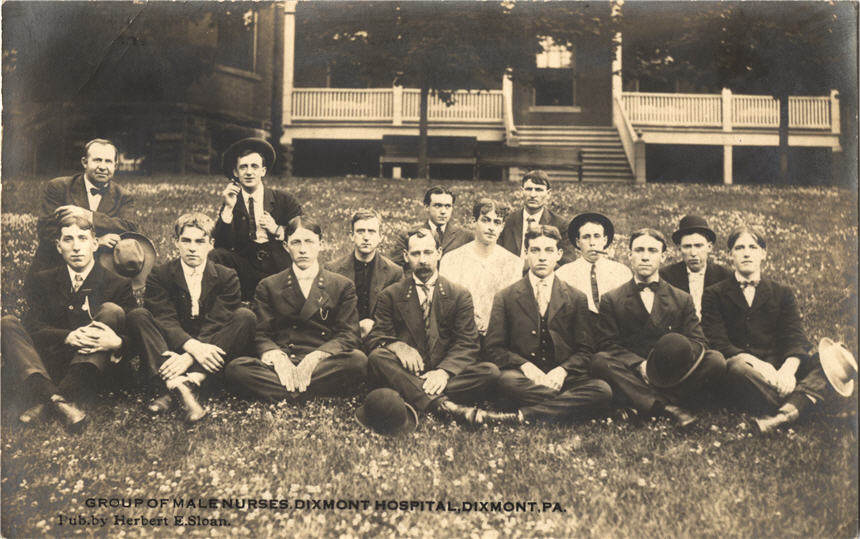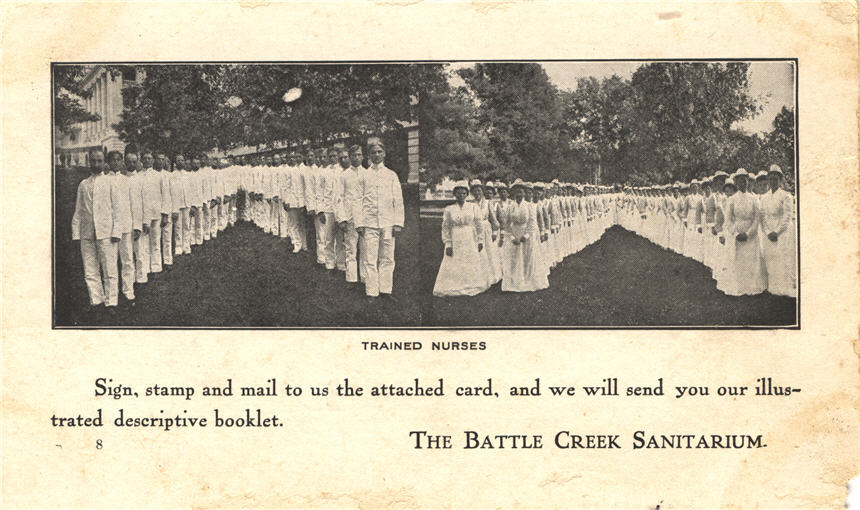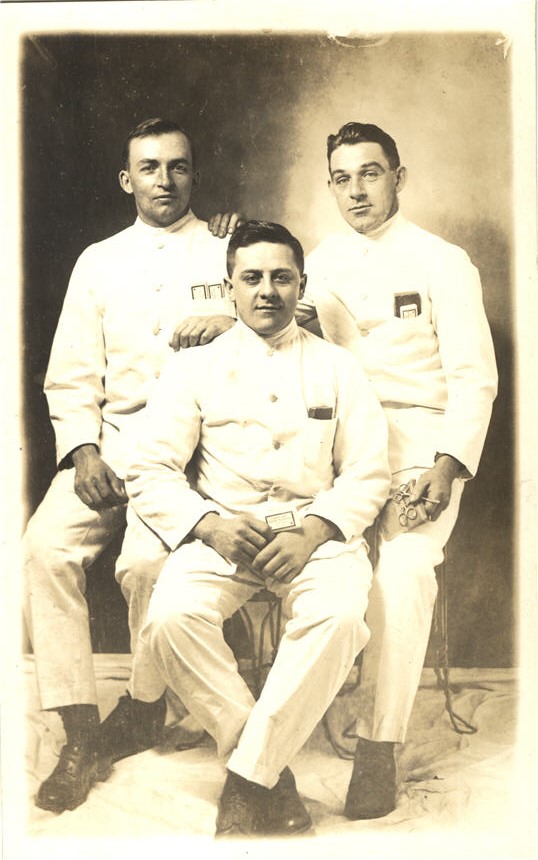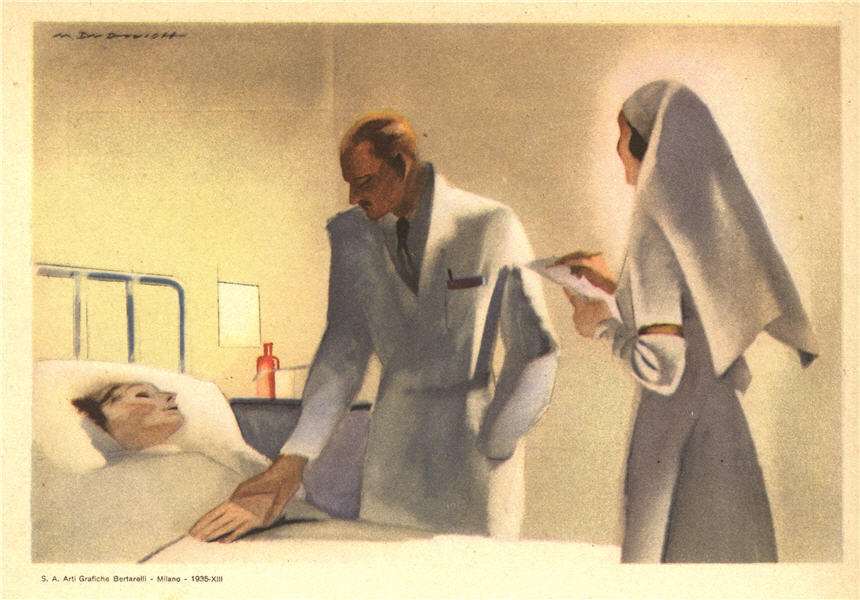The idea that nursing is exclusively women’s work has a long history. The reality, however, is far more complex. For hundreds of years, men have undertaken aspects of nursing work often in all-male institutions such as religious organizations and the military. Yet, their contributions are largely invisible.
Children learned that nursing is women’s work through games, toys, and stories. Girls were brought up to be nurses, while boys were raised to be soldiers and doctors.
Group of male nurses of Dixmont Hospital, PA, ca. 1910
Created by D. W. Short
Produced by Herbert E. Sloan Publishing
Dixmont Hospital for the Insane originally opened in 1862, as a self-sustaining community that housed up to 1,500 patients. Male nurses were commonly employed in psychiatric hospitals and sanatoria. As more lucrative employment became available in factories and offices their numbers declined.
Trained nurses of the Battle Creek Sanitarium, MI, ca. 1908
Produced by Battle Creek Sanitarium
Battle Creek Sanitarium employed equal numbers of male and female nurses to look after its wealthy clientele.
Male nurses, Lakewood, NJ, ca. 1910
The nursing uniform was a source of pride to both male and female nurses, although photographic portrait postcards of male nurses posing in their uniforms are comparatively rare.
Una voce dolce, una mano lieva (A sweet voice, a gentle hand), 1935
Produced by Italian Fascist National Federation for the Fight Against Tuberculosis, Rome
The female nurse imagined as the male doctor’s handmaiden or assistant is a recurring theme in 20th-century images of nursing and medicine. This started to change in the 1960s, when women from all walks of life began to demand equal opportunity and equal representation.



